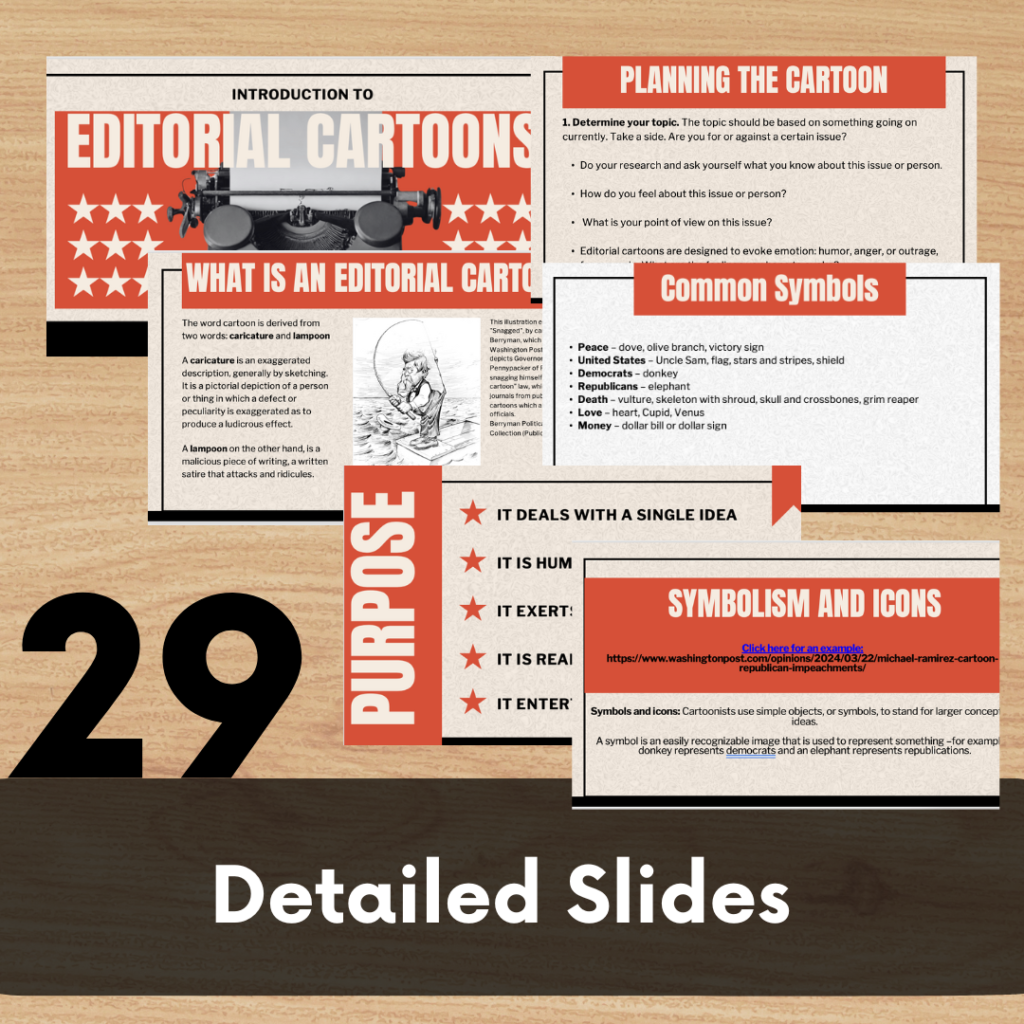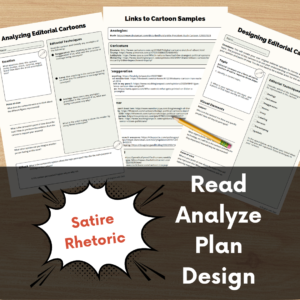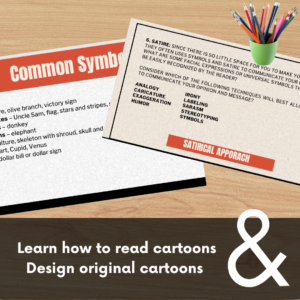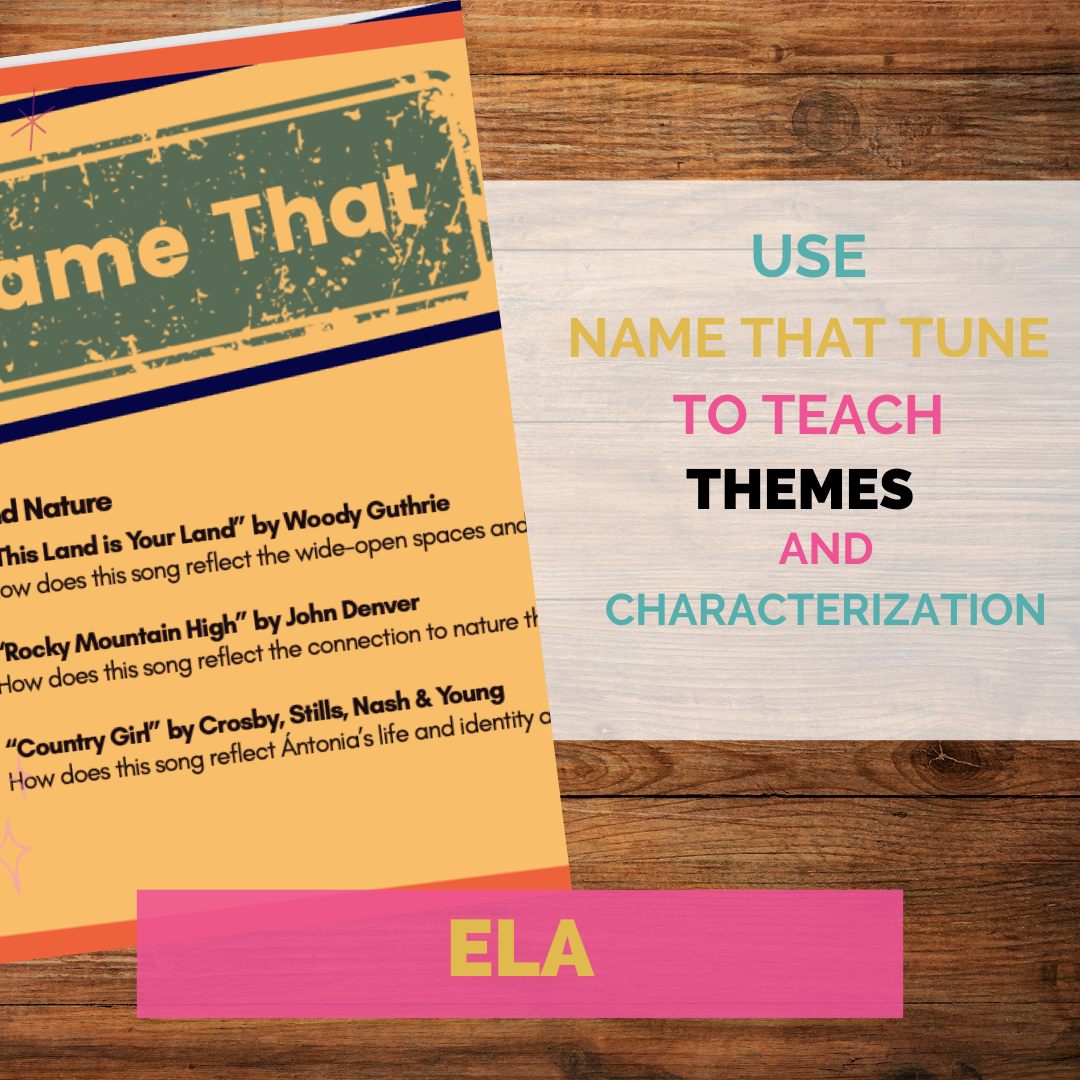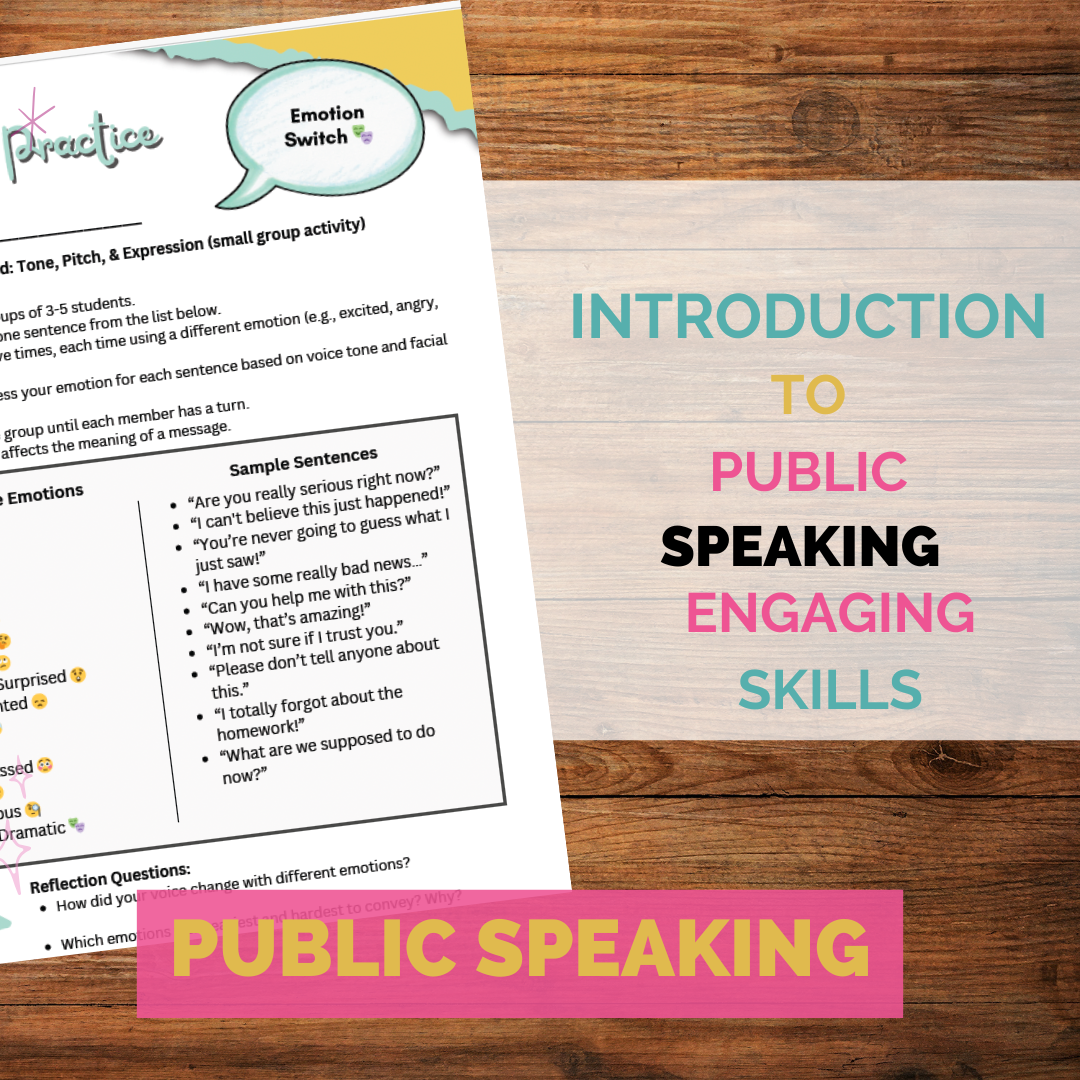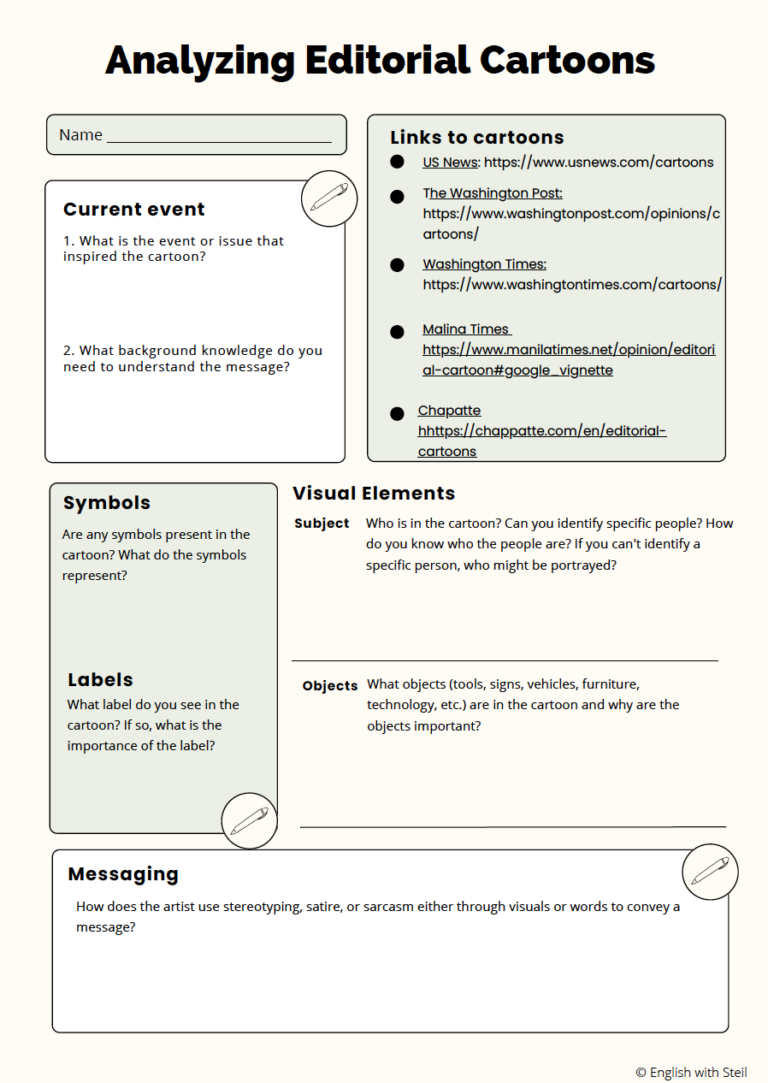
Why Editorial Cartoons?
Are you looking for an exciting way to enhance your students’ learning experience in informational text, journalism, social studies, or current events? The sis the perfect addition to your teaching resources: an interactive, hands-on unit that teaches students how to read, analyze, and design editorial cartoons using persuasive techniques.
Editorial cartoons are powerful educational tools. They combine art and journalism to convey messages about current events and social issues, often using humor and satire. By exploring these cartoons, students can develop critical thinking, visual literacy, and an understanding of persuasive techniques. This unit provides a structured yet engaging way for students to delve into the world of editorial cartoons.
Editorial cartoons offer a dynamic and interactive approach to teaching persuasive techniques, visual literacy, and critical thinking. This hands-on unit plan provides everything you need to help students read, analyze, and create editorial cartoons while building a wide array of skills.
Why Editorial Cartoons?
Editorial cartoons are much more than just humorous drawings; they’re a powerful blend of art and journalism that communicate complex ideas through satire, symbolism, and wit. By engaging with these cartoons, students can:
Develop Critical Thinking
Analyzing editorial cartoons requires students to identify the underlying message, evaluate the effectiveness of persuasive techniques, and consider the context of current events. This process sharpens their ability to assess information critically and form reasoned opinions.
Enhance Visual Literacy
In a world dominated by visual media, understanding how images communicate messages is essential. Editorial cartoons teach students to interpret symbolism, recognize caricature, and analyze composition—skills that transfer to other visual texts, including advertisements and infographics.
Build Persuasive and Rhetorical Skills
Editorial cartoons often employ rhetorical devices such as irony, analogy, and hyperbole. By studying these techniques, students learn how to craft persuasive arguments, both visually and verbally, enhancing their ability to communicate effectively.
Express Creativity
Designing their own editorial cartoons allows students to merge creativity with critical thought. They gain the confidence to articulate their views on important issues while exploring artistic expression.
Strengthen Media Literacy
In analyzing editorial cartoons, students learn to question sources, identify biases, and evaluate how media influences public perception. These skills are crucial for navigating today’s complex information landscape.
Students Will Love It
Teaching about editorial cartoons is interactive and engaging, making learning fun. By working with editorial cartoons, students can:
- Develop Critical Thinking: Analyzing the cartoons helps students think critically about current events and the messages behind them.
- Enhance Visual Literacy: Understanding the visual elements of cartoons improves students’ ability to interpret and create visual media.
- Express Creativity: Designing their own cartoons allows students to express their thoughts and opinions creatively.
Full Editorial Cartoon Unit Plan
Full Editorial Cartoon Unit Plan
This comprehensive unit is divided into two parts: analysis and creation. Each section is packed with resources to guide your students from understanding professional editorial cartoons to designing their own.
Part 1: Editorial Cartoon Analysis
The first phase of the unit introduces students to the foundational elements of editorial cartoons and the techniques cartoonists use to convey their messages. Here’s what’s included:
A Comprehensive Slide Deck: This engaging presentation defines key persuasive techniques—symbols, caricatures, exaggeration, labels, irony, analogy, and stereotyping—with examples from current editorial cartoons. The slide deck sets the stage for deep analysis and class discussion with samples.
Analysis Worksheet: Students use this worksheet to analyze professional editorial cartoons. Guided prompts help them identify visual and rhetorical devices, understand the cartoonist’s message, and evaluate its effectiveness. With over 30 linked examples, students have ample opportunities to explore diverse styles and topics.
Rhetorical Devices Focus: In this section, students learn how editorial cartoonists use rhetorical techniques to persuade their audience. Activities guide them to identify irony, pathos, and other devices, fostering a deeper understanding of how visual and textual elements work together.
Skills Students Build in This Phase
Critical Analysis: Breaking down the elements of cartoons teaches students to think analytically about both visual and written texts.
Cultural Awareness: Exploring current events through editorial cartoons helps students understand global and local issues.
Rhetorical Understanding: Recognizing and analyzing rhetorical devices equips students with tools for crafting their own persuasive messages.
Part 2: Design and Create Editorial Cartoons
Once students have a solid understanding of how editorial cartoons work, they’re ready to create their own. This phase focuses on guiding them through the creative process.
Step-by-Step Slide Deck: This presentation outlines six clear steps for designing an editorial cartoon, from selecting a topic to finalizing their artwork. Students explore sample cartoons and receive tips for effective storytelling.
Planning Worksheet: This tool helps students brainstorm topics, choose persuasive techniques, and organize their ideas into a coherent visual narrative.
Cartoon Template: A ready-to-use template ensures all students can start sketching their ideas without feeling overwhelmed by the process.
Grading Rubric: A clear and detailed rubric helps you evaluate students’ work based on creativity, use of persuasive techniques, clarity of message, and overall presentation.
Skills Students Build in This Phase
Creative Problem-Solving: Designing a cartoon requires students to distill complex ideas into a single, impactful image.
Artistic Expression: Students experiment with visual composition, style, and symbolism to convey their message.
Public Speaking: Presenting their cartoons to the class hones students’ communication and persuasive skills.
Empathy and Perspective-Taking: Addressing social or political issues through their cartoons encourages students to consider diverse viewpoints.
Expanding the Learning Experience
To deepen students’ understanding, consider these additional activities:
Gallery Walk: Display students’ completed cartoons and host a gallery walk where they can discuss each other’s work and share feedback.
Current Events Connection: Assign students to find and analyze editorial cartoons related to a recent news story, fostering connections between classroom learning and the real world.
Interdisciplinary Collaboration: Partner with art or history teachers to explore the historical significance of editorial cartoons and their impact on public opinion.
Final Thoughts
Editorial cartoons are an invaluable tool for teaching critical thinking, persuasive techniques, and media literacy. By analyzing and creating their own cartoons, students gain a deeper understanding of current events and develop skills that extend far beyond the classroom. Whether you’re teaching journalism, social studies, or English, this unit plan will inspire creativity, foster collaboration, and engage your students in meaningful learning. Ready to bring editorial cartoons to your classroom? Let’s get started!
Bring editorial cartoons into your classroom
As an educator, you’ll appreciate how this unit seamlessly integrates into various subjects. Whether you’re teaching informational text, journalism, social studies, or current events, this resource provides a fresh and engaging way to approach these topics. The structured yet flexible format makes it easy to adapt to your classroom needs.


